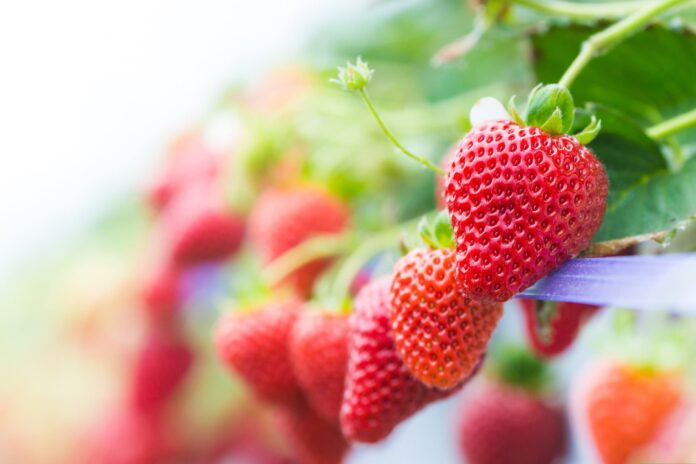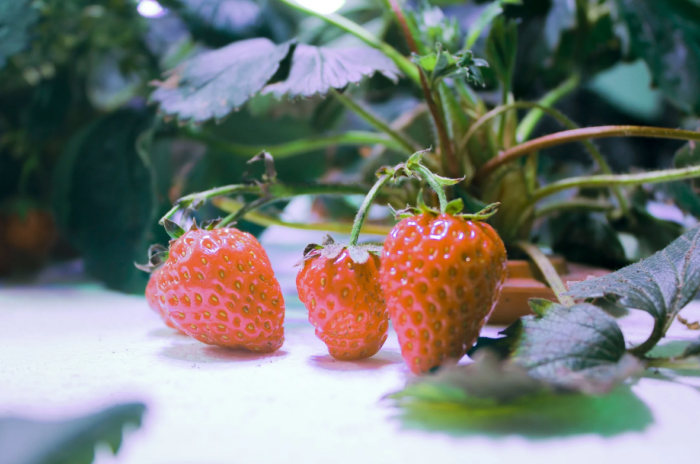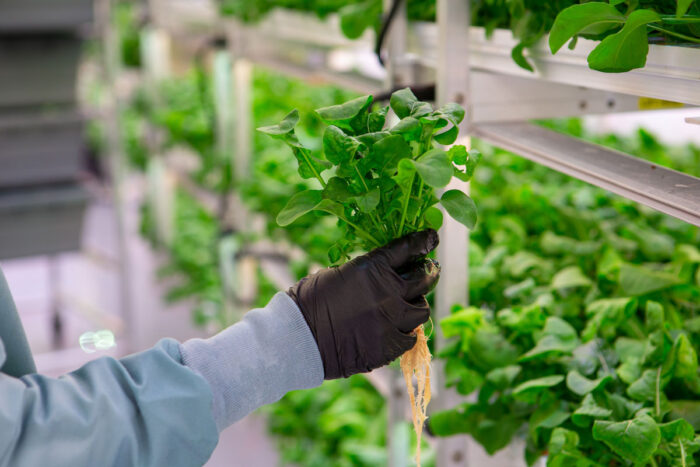
Growing berries hydroponically is not only fruitful but also an efficient way of growing a bountiful crop within a limited space. While hydroponic strawberries are the most popular berries preferred by professional as well as home growers for their ease of growing, other berries like blueberries, cranberries, and raspberries can also be grown hydroponically. The only difference is that all other berries apart from hydroponic strawberries are slightly difficult to grow, and you need to know the physiology of these plants and how they blossom. But if done correctly, these berries can also be grown indoors. So, in this article, we will tell you everything about how to grow berries in your hydroponic setup. But first, let’s get to know the process of growing berries hydroponically in brief:
- Start with choosing the right medium. You can use any one of these – starter plugs, sand, water, or perlite
- Place the berry roots in the medium, cover them properly, and let them settle
- Berries require cold weather to initiate. So, stimulate a cold temperature for the berry roots to blossom
- Ensure that berries get appropriate lighting. It may vary for different berries, so make a note of that
- Provide them with proper nutrient solution, which also varies according to the crop. Different berries require a different amount of nutrients
- The appropriate temperature should also be maintained to support their growth
The best way of growing strawberries hydroponically

Growing strawberries hydroponically provides several advantages. The biggest of them all is that hydroponic strawberries are a lot healthier than the ones grown in soil. They are less prone to flies and other pests as well. Hydroponic setups for growing strawberries are more space-efficient as you can make use of vertical strawberry growing systems. These systems are water efficient and provide a bumper crop of big, fresh, juicy strawberries & they also occupy very little space compared to the traditional farming method. While there are several benefits, the only disadvantage of growing hydroponic strawberries is that the initial setup might be a little on the expensive side. But you can make up for it as it finally yields a generous crop.
Now, let’s find out how to grow strawberries hydroponically:
1) For starters, ebb and flow, deep water culture, or hydroponic drip systems are best suited since they are easy to set up and maintain. While you can make your hydroponic systems, there are plenty of players in the market who provide efficient and affordable hydroponics systems pre-designed for your use one of them is Kushy.com.au a leading hydroponic supplier in Australia. You can use either and start gardening
2) Decide on whether you want to grow your hydroponic strawberries from seeds or saplings. Seeds take a long time to germinate and require proper care; saplings, on the other hand, grow much quicker. So, if you wish, you can buy saplings from a nearby nursery and start your garden.
3) Strawberries require 8-12 hours of light every day, so ensure you have a proper grow light system in place. If you are growing in a greenhouse, then your plants will get enough natural light and you will not need to buy grow lights which can cut down your overall setup cost.
4) Maintaining the right pH value is important for plant growth. Strawberries grow the best at pH levels between 5.8-6.2. So, ensure you maintain that level and use water that is filtered properly.
5) Hydroponic growing medium is yet another important element for growing healthy hydroponic strawberries. The best medium to use here is coco coir. It is simple to use, readily available, affordable, and inert (it doesn’t change the pH balance). You can also add some perlite to increase aeration
6) Strawberries need an ample amount of nitrogen, potassium, and phosphorus. So, choose your nutrient solution accordingly
How to grow other berries in a hydroponic setup

Although strawberries are the most popular berries amongst hydroponic growers, other berries can also be grown if done correctly.
Growing blueberries hydroponically:
Blueberries grow the best in acidic conditions, and thus it is imperative to maintain the correct pH level between 4.5-5.8. Furthermore, they require 12-16 hours of light daily and more than 80 ppm of sulfur for best growth. It is best to invest in sulfur pills to ensure that your plants soak in enough nutrients from the solution.
Growing raspberries hydroponically:

There are two types of raspberries available – floricane (provides berries in summer) and primocane (provides berries in fall). For hydroponic systems, primocane is more suitable to the environment and can provide a lot of berries throughout the year. Primocane berries also require less space to grow, which is again ideal for hydroponic setups. To grow raspberries, it is recommended to use transplants than using seeds as they are a lot easier to grow. They require a maximum of 12 hours of light, and you need to maintain the pH level between 5.8-6.5. The ideal temperature for the growth of raspberries is between 71.6- and 75.2-degrees Fahrenheit.
Growing cranberries hydroponically:
Cranberries might require more space as compared to other berries, but they produce a good yield. Like blueberries, cranberries also require acidic conditions to grow well; thus, the pH level should be maintained at 4.5. Since cranberries have long stems, it is better to grow them in elevated systems so that there is enough space for them to flourish.
Hydroponic systems are without a doubt becoming one of the most popular gardening methods across the world. Growing hydroponic berries requires a lot of care and attention. But all the hard work pays off once they yield their crop. Growing these colourful fruits is quite a satisfying experience and equally viable as well. All you need is the right hydroponic supplies to create the right kind of hydroponic setup for each kind of berries that you wish to grow.
















